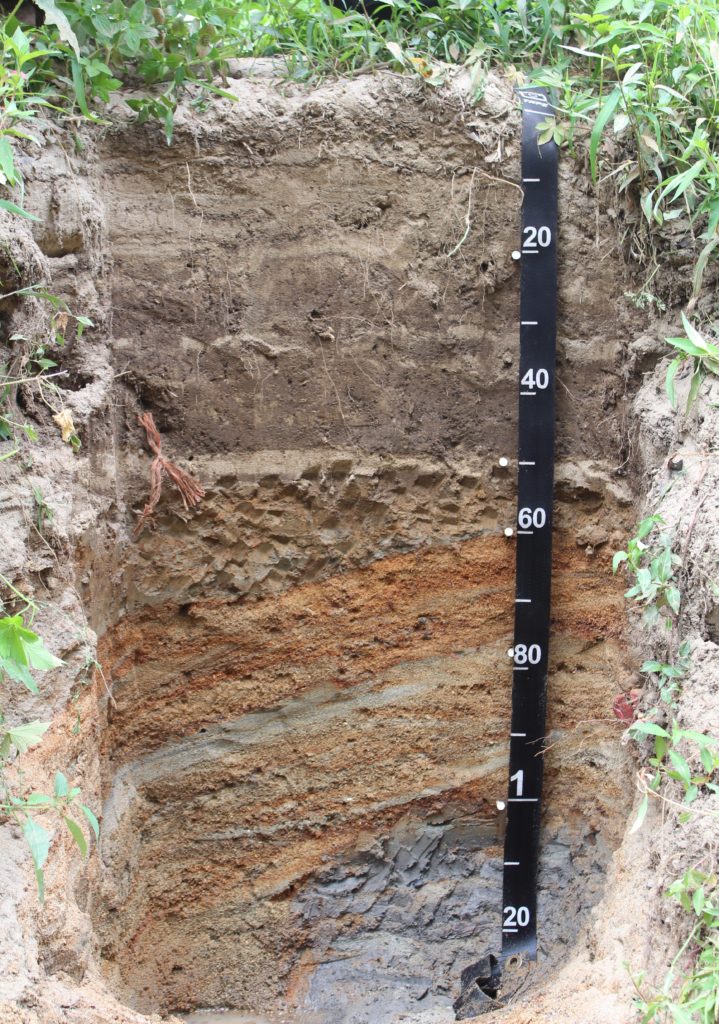Soil: Life Under Your Feet
go.ncsu.edu/readext?748066
en Español / em Português
El inglés es el idioma de control de esta página. En la medida en que haya algún conflicto entre la traducción al inglés y la traducción, el inglés prevalece.
Al hacer clic en el enlace de traducción se activa un servicio de traducción gratuito para convertir la página al español. Al igual que con cualquier traducción por Internet, la conversión no es sensible al contexto y puede que no traduzca el texto en su significado original. NC State Extension no garantiza la exactitud del texto traducido. Por favor, tenga en cuenta que algunas aplicaciones y/o servicios pueden no funcionar como se espera cuando se traducen.
Português
Inglês é o idioma de controle desta página. Na medida que haja algum conflito entre o texto original em Inglês e a tradução, o Inglês prevalece.
Ao clicar no link de tradução, um serviço gratuito de tradução será ativado para converter a página para o Português. Como em qualquer tradução pela internet, a conversão não é sensivel ao contexto e pode não ocorrer a tradução para o significado orginal. O serviço de Extensão da Carolina do Norte (NC State Extension) não garante a exatidão do texto traduzido. Por favor, observe que algumas funções ou serviços podem não funcionar como esperado após a tradução.
English
English is the controlling language of this page. To the extent there is any conflict between the English text and the translation, English controls.
Clicking on the translation link activates a free translation service to convert the page to Spanish. As with any Internet translation, the conversion is not context-sensitive and may not translate the text to its original meaning. NC State Extension does not guarantee the accuracy of the translated text. Please note that some applications and/or services may not function as expected when translated.
Collapse ▲Have you ever thought about what goes on in the soil? Plant roots and earthworms are probably some of the first things that come to mind, but the truth is, it is much more than that. It is an entire ecosystem, an environment that has major implications on life above ground. The soil has a larger impact on your life than you can imagine!
Of course farmers grow crops, and you can see what is going on above ground. Green plants start as a small seed and grow into larger plants that end up feeding you and your family. But how do these plants grow? The reality is that they need help. Insects like ants, beetles, and earthworms create tunnels in the soil to move around, which allows air and water to get into the ground. Mycorrhizae, a fungus that grows under the surface, connects with the crops roots, allowing them to reach further than they could get on their own. Tiny microscopic organisms, or microbes, break down nutrients in soils, making nutrients available to crops in a way that they can absorb and use them. Actually, there are more living individual organisms in a tablespoon of soil than there are people on the earth. Crop roots would not be able to move in the soil or absorb the nutrients the crop needs without all of these little creatures working together.
You have probably heard about greenhouse gases in the atmosphere that are decreasing the quality of our air. One of the most commonly mentioned solutions to decrease these gases is to plant trees, grass, and other plants which are able to absorb gases like carbon dioxide. But how do these plants remove so much carbon dioxide? When plants absorb carbon dioxide, they use the carbon to make sugar, or food for itself, releasing the oxygen into the air – also known as photosynthesis. The carbon has to go somewhere after that! So as plants die, they are broken down into organic matter. Organic matter is just a term for the solid carbon that is in a soil. As this process is repeated, this carbon builds up. This results in soils removing up to 25% of the world’s carbon dioxide from the atmosphere every year!
Soil plays a large role in an extremely important ecosystem called a wetland. This is land that is flooded, either permanently or seasonally, like marshes or swamps. Though they do not get as much attention as the very important rainforests of the world, they are being degraded at a quicker rate than any other ecosystem. These environments are home to many organisms like fish and migrating birds, provide tourism and recreational activities, and protect our land from floods and major storms by acting as buffers. Most importantly, it’s been found that these ecosystems can filter and improve water quality. These benefits come from the soil, which makes these ecosystems possible.
Scientists are just beginning to understand all of these complex relationships soil has with our quality of life. As these discoveries are made, changes in industries directly involving the soil like agriculture, architecture, and energy are making changes to protect this valuable resource. For example, the vast majority of Union County field crop producers have “no-till” systems. Scientists have shown that these systems can increase the carbon stored in the soil and support the little creatures living underground. Understanding the impact that soil has on you is the first step in protecting this valuable resource.
“The soil is the great connector of lives, the source and destination of all.” ~ Charles Kellogg





